Turn IT Backlogs Into Enterprise Agility With a True Enterprise
Low-Code Platform
Build secure, scalable enterprise low-code apps, simplify complex workflows and modernize operations - all while giving IT full control and the business the agility it needs.

Trusted by 800+ enterprise brands



What is an Enterprise Low-Code Platform?
An enterprise low-code platform is an application development environment that helps organizations build and deploy business applications using visual modeling, drag-and-drop components, and reusable logic. Unlike basic low-code tools, enterprise low-code platforms are built for scale - offering the security, governance, and performance that IT teams need to manage mission-critical workflows and applications.They allow both IT and business teams to work faster, streamline complex processes, and deliver secure, compliant digital solutions without relying heavily on traditional coding.

Tackle complex IT needs using a low-code enterprise software
Major headwinds make it impossible for IT teams to extend digital transformation
throughout the organization
Massive IT backlogs
Critical project delays hurt business efficiency and block innovation
Scaling issues
Existing manual processes can't meet growing demands
System limitations
Traditional tools can’t keep up with the business pace
Longer development
Building and deploying new applications takes too long
Digital security concerns
Ensuring strong security during digital transitions is difficult
Integrating legacy systems
Integrating old and new systems complicates and drains resources.
Clear IT Backlogs in Weeks Not Months
Low-code enterprise platforms like Kissflow accelerate app development, enabling the rapid creation of enterprise-grade applications
Design complex applications
Create sophisticated apps with multiple workflows, integrations, custom pages, and dashboards
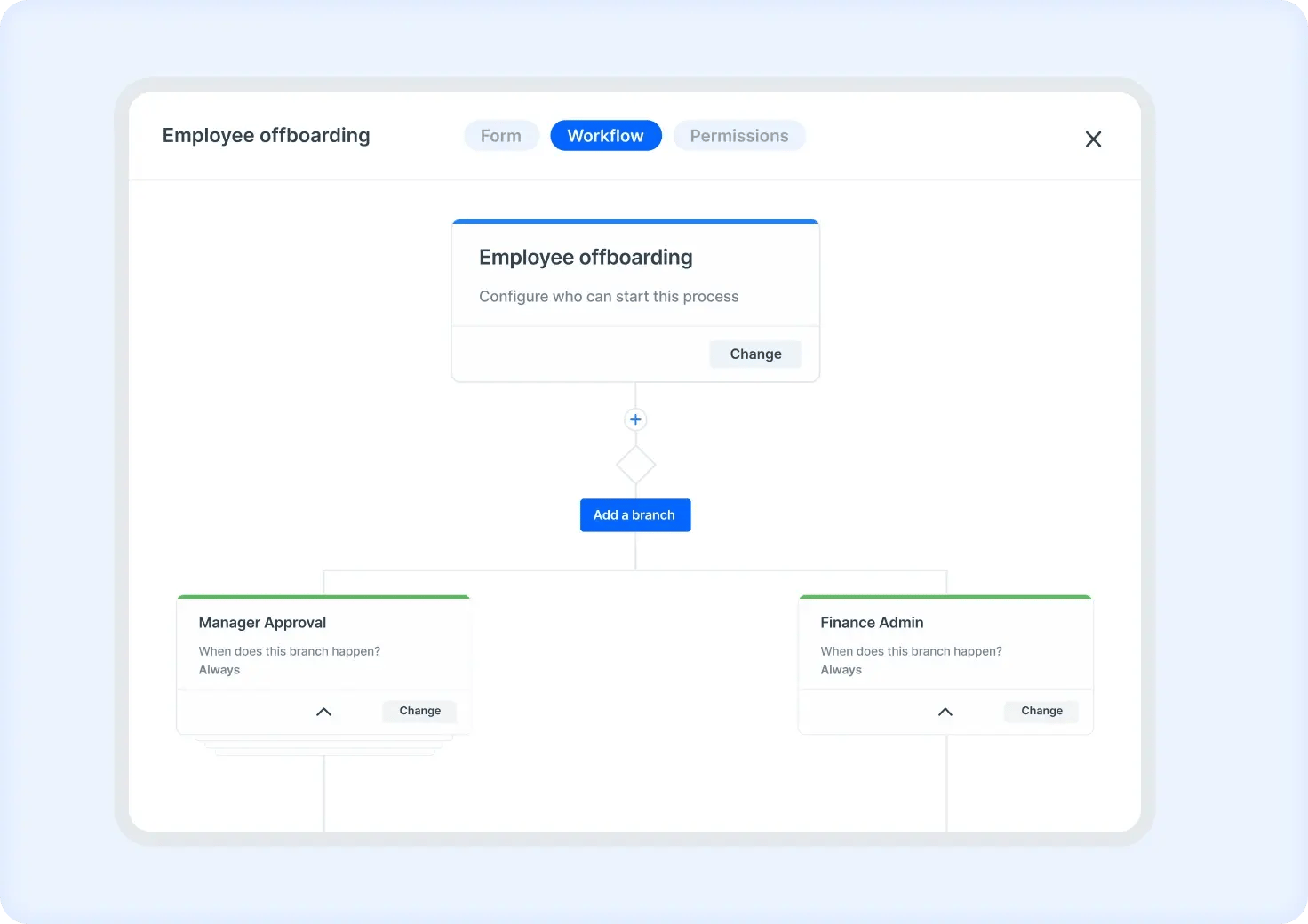
Visual modeling tools
Utilize intuitive drag-and-drop interfaces and visual methods for smooth app development
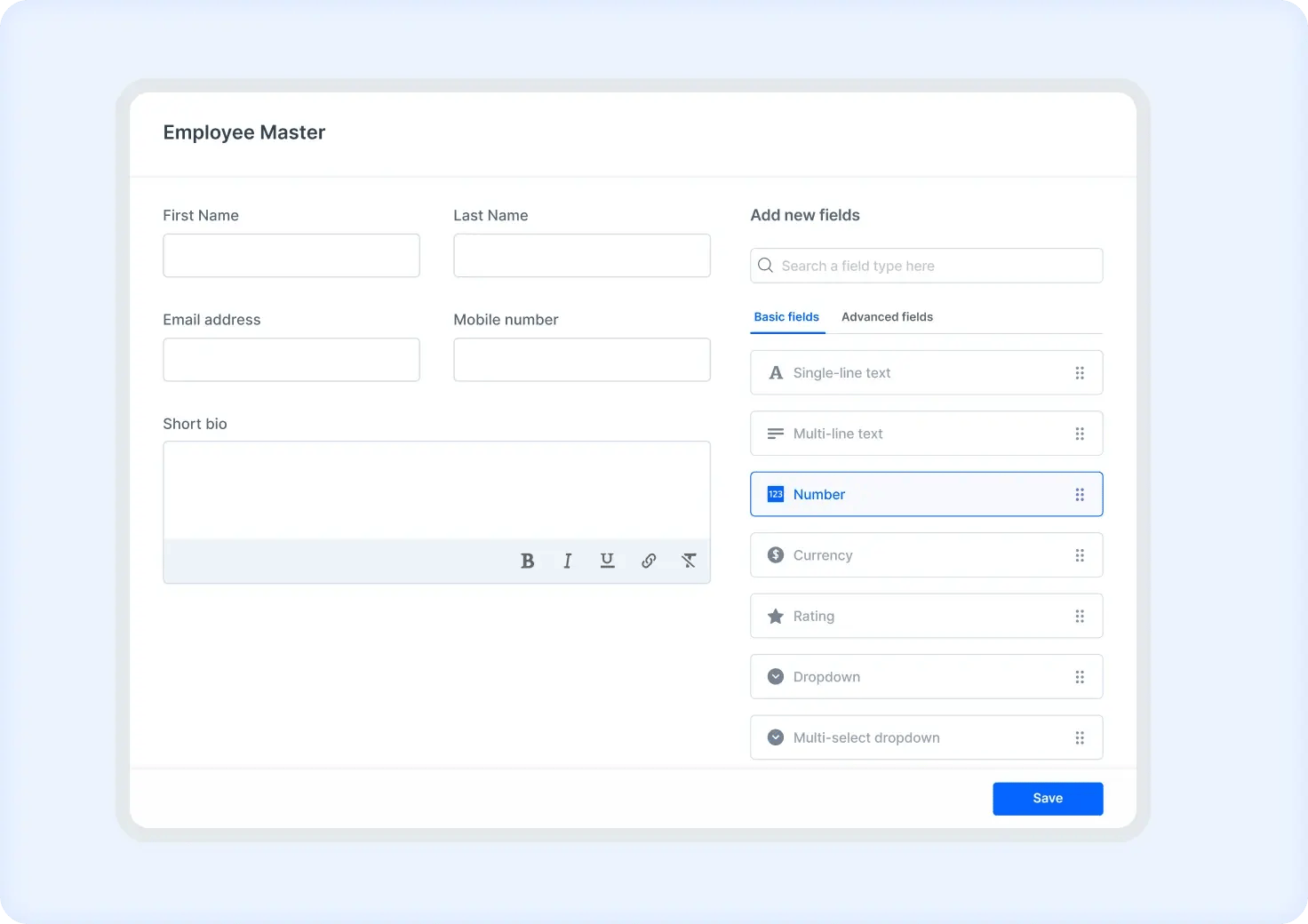
Accelerate app development
Instantly design and automate forms with an intuitive drag-and-drop builder
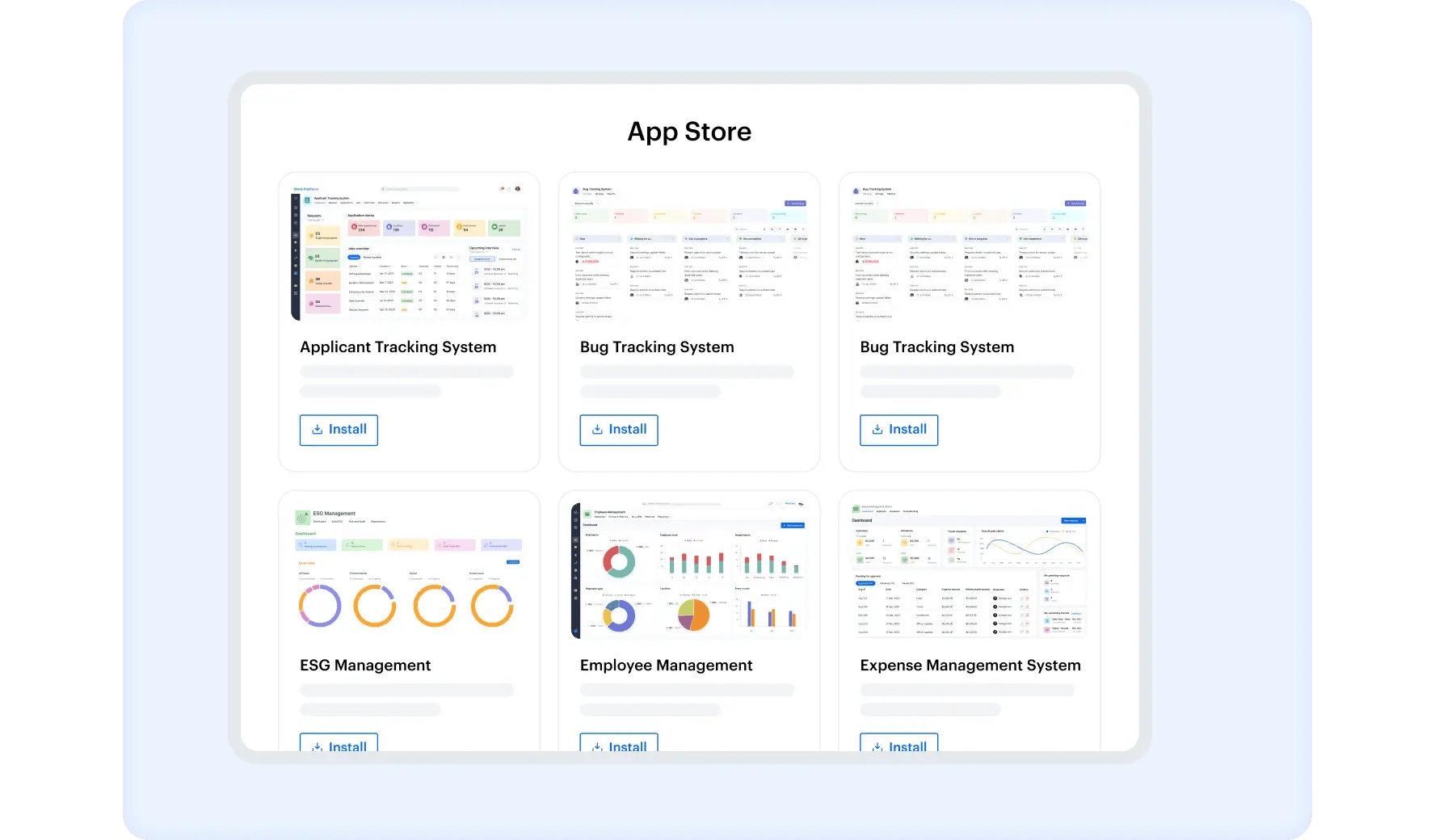
Comprehensive governance
Maintain control and compliance with robust governance, ensuring applications meet standards and security
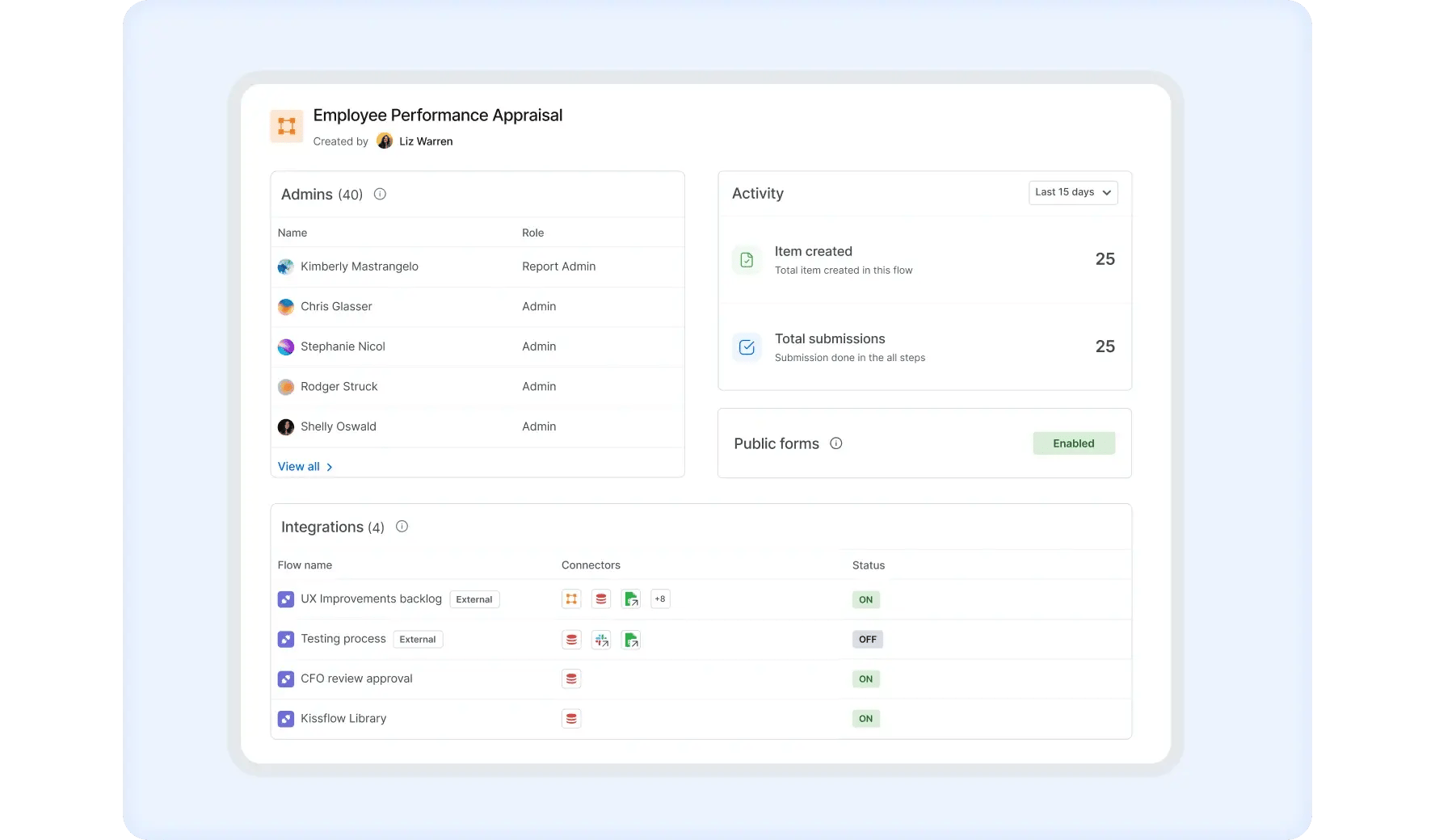
Gain actionable insights
Track key metrics and monitor application performance with comprehensive reporting and analytics tools
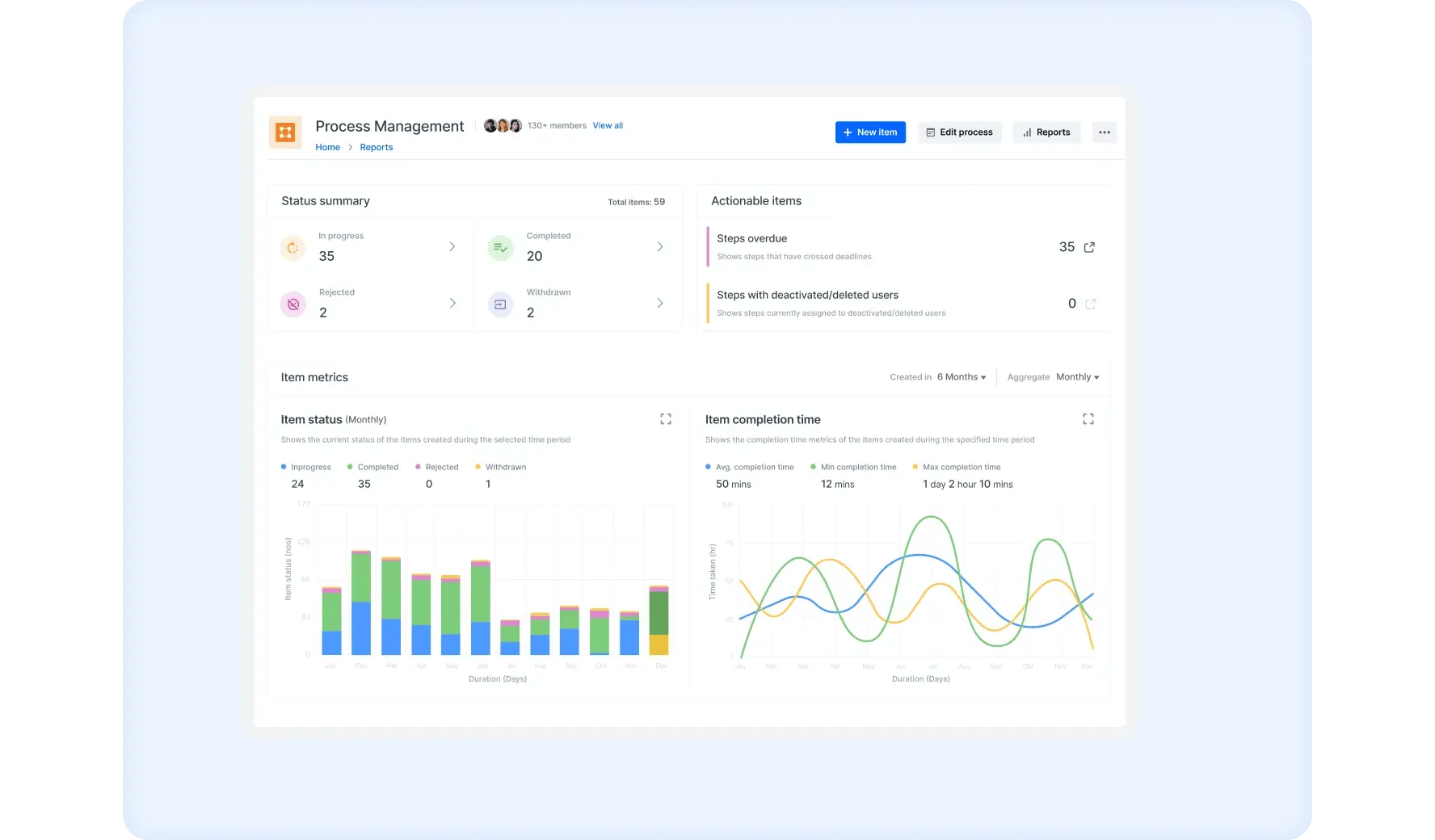





Enterprise low-code vs generic low-code
Category |
Enterprise Low-Code Platform |
Generic Low-Code Platform |
|---|---|---|
Primary Goal |
Building scalable, mission-critical applications with enterprise-grade governance, compliance, and integration |
Enabling faster app creation for departmental or small-scale business use cases |
Technical Skill Required |
Basic to intermediate coding knowledge; typically used by professional developers and IT teams |
Minimal coding knowledge; designed for quick builds by tech-savvy business users |
Development Approach |
IT-led with cross-departmental collaboration and centralized governance |
Business-led or departmental initiatives with limited IT oversight |
Governance & Security |
Strong governance, role-based access control, audit trails, and compliance with enterprise standards (e.g., ISO, GDPR, SOC 2) |
Basic access control and limited governance features; not suited for strict compliance needs |
Integration Capabilities |
Deep integration with legacy systems, ERPs, CRMs, and enterprise data sources |
Limited to API-based or prebuilt integrations for common tools |
Category
Primary Goal
Technical Skill Required
Development Approach
Governance & Security
Integration Capabilities
Enterprise Low-Code Platform
Building scalable, mission-critical applications with enterprise-grade governance, compliance, and integration
Basic to intermediate coding knowledge; typically used by professional developers and IT teams
IT-led with cross-departmental collaboration and centralized governance
Strong governance, role-based access control, audit trails, and compliance with enterprise standards (e.g., ISO, GDPR, SOC 2)
Deep integration with legacy systems, ERPs, CRMs, and enterprise data sources
Generic Low-Code Platform
Enabling faster app creation for departmental or small-scale business use cases
Minimal coding knowledge; designed for quick builds by tech-savvy business users
Business-led or departmental initiatives with limited IT oversight
Basic access control and limited governance features; not suited for strict compliance needs
Limited to API-based or prebuilt integrations for common tools
Examples Of Enterprise Low-Code Apps
Low-code enterprise apps enable IT teams to rapidly build secure, scalable, and customizable solutions tailored to complex business needs. Here are a few examples of enterprise-grade use cases:
Vendor Onboarding App
Streamline supplier registration, document verification, and approval workflows.
Field Service Management App
Coordinate field operations, track service requests, and manage mobile teams in real time.
Claims Intake App
Automate claims submission, routing, and validation to accelerate resolution cycles.
CAPEX Approvals App
Digitize capital expenditure requests with automated review and approval processes.
Employee Onboarding App
Simplify new hire documentation, training assignments, and task tracking.
Purchase Requisition App
Manage procurement requests with transparent approval flows and budget controls.
Kissflow’s Enterprise Low-Code Software Converts 90% of IT Backlogs into Reality
-
Minimize coding and reliance on specialized developers
-
Speed up development and launch applications swiftly
-
Welcome all skill levels with a user-friendly platform

Kissflow shines in the Forrester Wave™: A strong performer in enterprise low-code platforms
Here’s what Forrester says about Kissflow
Download Report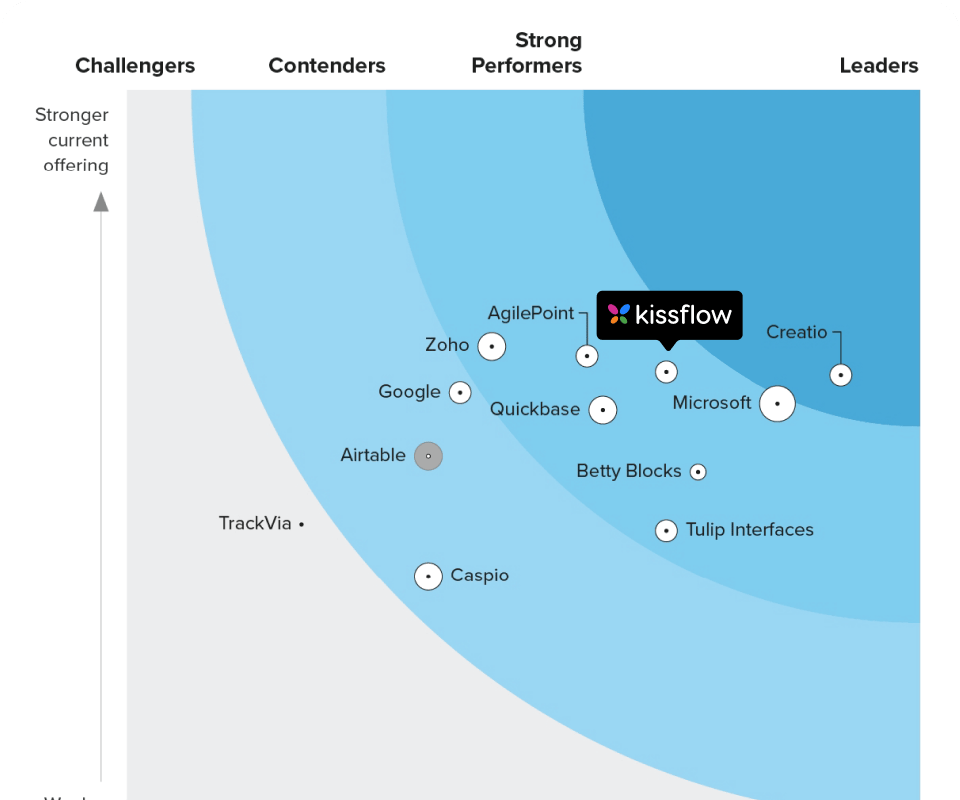
Why industries choose Kissflow low-code platform
for enterprise transformation
Learn how Kissflow can help you build the perfect solution to meet the
unique needs of diverse industries.






Puma Energy achieves 15x user growth
with Kissflow's enterprise low-code platform
“Advanced automation of all processes is easy to set up. I cannot imagine how to manage workflows without this software.”
Tanay Tiwary
Global Head - Digitalization & Business Improvement
Frequently Asked Questions
When evaluating an enterprise low-code platform, focus on scalability, security, integration depth, and governance. The right platform should enable collaboration between IT and business teams, support multi-environment deployments, and ensure compliance with enterprise-grade standards like SOC 2, ISO 27001, and GDPR.
An enterprise low-code platform offers advanced governance, extensibility, and scalability compared to standard tools. It integrates deeply with systems like ERP, CRM, and HRMS, supports complex workflows, and ensures data security and compliance — features typically missing in generic or departmental low-code tools.
Yes. Modern low-code platforms like Kissflow provide native connectors, REST APIs, and integration hubs to link seamlessly with systems such as SAP, Oracle, Salesforce, and Microsoft Dynamics. This ensures smooth data flow, workflow automation, and process visibility across all enterprise applications.
Enterprise-grade low-code platforms are built with robust security controls, including role-based access, SSO, MFA, and end-to-end encryption. Platforms like Kissflow comply with global standards (SOC 2 Type II, ISO 27001, GDPR) to protect sensitive data, ensuring that apps built on them meet enterprise security and compliance needs.
Kissflow’s platform integrates AI-driven automation, process recommendations, and predictive analytics to optimize workflows and accelerate decision-making. IT teams can leverage AI to detect bottlenecks, auto-generate process maps, and recommend next steps. As business needs evolve, the platform’s modular architecture and microservices-based design ensure scalability and adaptability for future technologies like GenAI, RPA, and intelligent process orchestration.
Kissflow’s low-code platform offers native connectors, REST APIs, and integration tools to seamlessly connect with systems such as SAP, Oracle, Salesforce, and Microsoft Dynamics. This enables real-time data exchange, cross-functional workflow automation, and unified dashboards without heavy coding or external middleware. Integration flexibility ensures that enterprises modernize without disrupting existing tech stacks.













